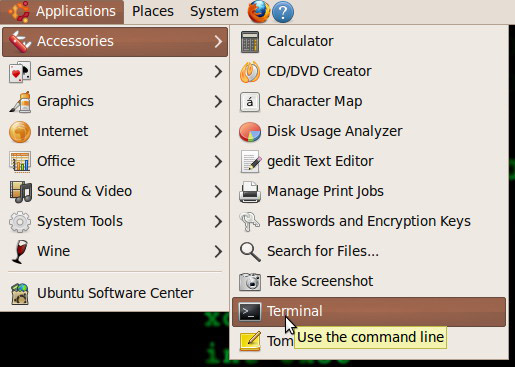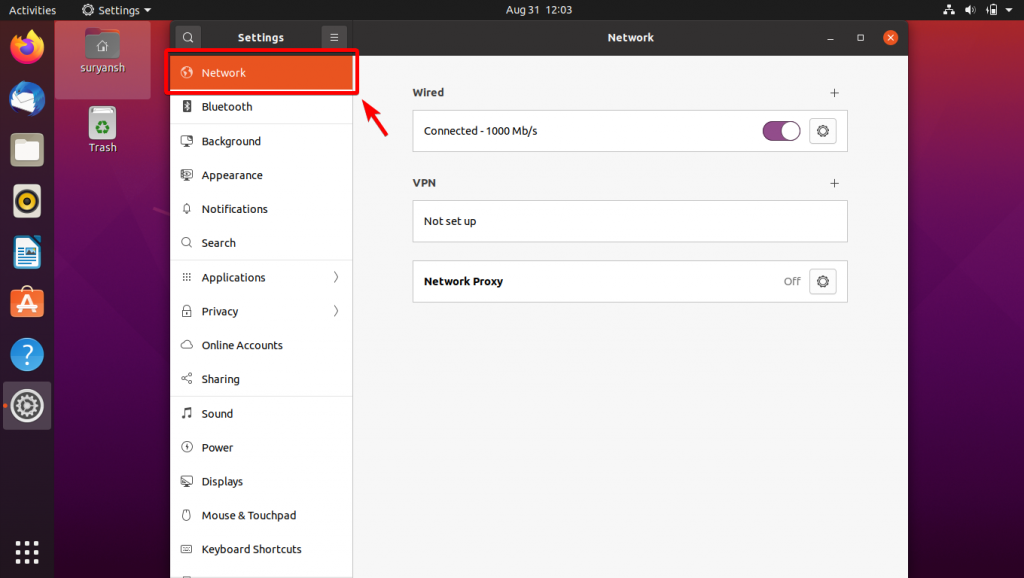

- #How to check mac address on ubuntu update#
- #How to check mac address on ubuntu full#
- #How to check mac address on ubuntu software#
I just tested creating a full clone of a Linux VM, and sure enough the file was updated with the new IP and MAC address. That's the file where WS writes all of its VMs NAT networking info, which ( I think ) gets updated automatically when the guest IPs are changed by the DHCP server. I could easily extract the IPs from their respective MAC addresses. while searching /etc/vmware directory, I found that the info in the file dhcpd.leases in /etc/vmware/vmnet8/dhcpd/ directory, seems to do the trick as well. didn't know that, it gave me all the info I needed. These options ( -sP ) of nmap worked great: I'll assign points as soon as they're available.
#How to check mac address on ubuntu software#
Lou and vmroyale, your answers are definitely helpful, but I don't see the helpful buttons near your usernames ( software issues, I believe ). Maybe I'm doing something wrong btw I'm an occasional user of both these commands. Whereas with nmap command I get no valid results, ( sudo nmap -T Aggressive -A 192.168.51.0/24 - some verbose non-helpful info ). Kind of defeats the point of providing only hostname and MAC addr. It works only when I provide* IP address* and MAC addr.

But just to show the IP address, use the command with ip addr, ip a or ip address options (all are same) in the following manner. ip command is versatile and can be used for several other things related to networking.

#How to check mac address on ubuntu update#
When I'm trying to update the table, using hostname and MAC addr, it does not accept it. Well, you can use the ip command for this purpose. I'm having some issues with arp command though. So, now I know that the machine VMName1, with MAC 00:14:BF:19:45:61 has IP address 10.0.2.1 and is my Linksys router.ĭan, vmroyale - thanks for your assistance, but the problem with vmrun command is that it requires username / password written explicitly in the open, a bit unsecure that could be my last resort. If you make up your own MAC address, youre supposed to set the 2s place bit (the 'locally administered' bit) in the first byte, to differentiate it from a guaranteed globally unique MAC address. Thats the 'group' (multicast/broadcast) bit. Nmap done: 256 IP addresses (4 hosts up) scanned in 3.71 seconds Hi JaroslavKucera, Unicast MAC addresses must never set the 1s place bit in the first byte. MAC Address: 00:0E:5C:1A:44:1E (Motorola BCS) The Ethernet MAC Address is a unique identifier for network cards, of the form 05-A8-34-C3-67-B4 or 05A8342367B4 (6 pairs of digits and characters in the range A-F, which might or might not be separated by hyphens). Then I could run a combination of arp and/or nmap to find the MAC address of active machines and their respective IP addresses. For example, I create a table and put it in a file like so: If I were to create a (database type) file with each VM's name and MAC address, then I could use nmap or arp commands to obtain the IP address. That said, what I was trying to say was:Įach (real and virtual)machine has a unique MAC address. This command will show a list of all learned MAC addresses along with their associated port number. You can check the current forwarding table or MAC learning table of a Linux bridge using the following command. Probably the easiest solution is to use static IP addresses. Building a FDB is often called ' MAC learning ' or just ' learning ' process.


 0 kommentar(er)
0 kommentar(er)
